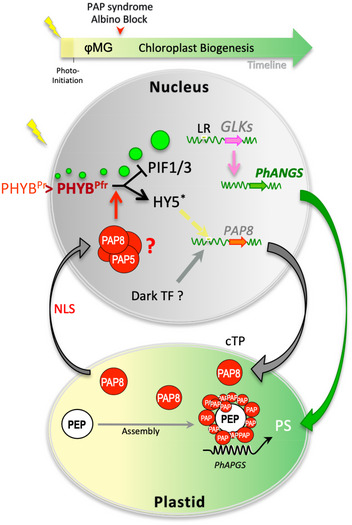Figure 8. Model for the connection of HY5 to the GLK1 genetic pathways through the action of PAP8 during the dark‐to‐light transition.

The yellow spark represents the initial exposure of the seedling to light. Photo‐initiation is mediated by PAP8 and PAP5 rapid accumulation in early photomorphogenesis (φMG): the Pr state of phytochrome B (PHYBPr) is converted in the Pfr state (PHYBPfr), which enters the nucleus, accumulates in early photobodies (small green discs) that regroup in late photobodies (large green discs) while promoting the destabilization of PIFs (PIF1 and PIF3 in particular). The red arrow in the timeline represents the albino block observed in pap8‐1 that may represent a key feature of the PAP syndrome. The dark induces ubiquitination and degradation of HY5Ub impeding recognition of a cis‐regulatory element in the promoter of PAP8 (yellow box). Light induces transcriptional activation of PAP8 in palisade cells likely through the HY5 pathway (dashed yellow arrow on PAP8 promoter); this part of the model is supported by transient assays, in vitro experiments, and in vivo genome‐wide ChIP sequencing data. The cTP pre‐sequence of PAP8 allows plastid import and then PAP8 assembly within the PEP‐PAP complex. Using an unknown trafficking route such as travelling across the plastid envelope (?), part of the processed PAP8 pool is found in the nucleus where its action could be necessary for the PHYB‐mediated transcriptional activation of GLK1 directly through HY530 (dashed yellow arrow) or other light‐responsive factors (LR), which in turn can activate the photosynthetic‐associated nuclear genes (PhANGs) concomitantly to the (PEP‐PAP)‐driven expression of the photosynthetic‐associated plastid genes (PhAPGs) essential for the building of the photosynthetic apparatus (PS) in the functional chloroplast.
